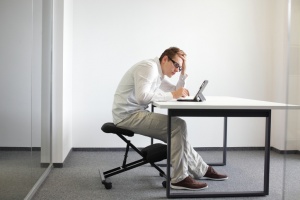Pilates and Heart Failure
When I was a new Pilates client, I would ask if Pilates could help with knee or hip pain and the answer was always yes. Despite the malady, in some shape or form, Pilates could improve and sometimes reverse whatever was going on.
Recently, I ran across a 2011 study that compared Pilates and Heart Failure patients with a traditional cardiac rehab program. I’ll give you my Cajun interpretation. To read the abstract in it’s entirety on pubmed, click here https://www.ncbi.nlm.nih.gov/pubmed/21884019.
The study had 16 participants with Heart Failure and a left ventricular ejection fraction of 27 %. So they were every sick people. Just the act of getting up and walking across the room could be compared to walking ten mile for the average people. A healthy number would be in the range from 55% to 70%.
The entire group was enrolled in a traditional cardiac rehab and with half of the group participating in a mat Pilates class. After 16 weeks, both groups increased their exercise time and stamina. Only the Pilates group showed a significant change in the peak VO(2). What is VO(2)? It’s the measure of the maximum rate of oxygen consumption during exercise. Athletes understand the importance of their VO(2) levels because the higher the oxygen levels in the blood during exercise equates to higher performance and increased endurance. Remember the patient who struggled to walk across the room? Increasing the oxygen levels increase their ability for mobility.
The real question lies in exactly how does Pilates exercises accomplish this? Here’s my Cajun reasoning. The first rule in Pilates is the breath. We focus on how to breathe and employ the ribcage to move in every direction which in turn increases the amount of oxygen moving into and out of the lungs. It encourages the intercostal muscles between the lungs to move.
Second, Pilates focuses on posture. In today’s society, we spend a lot of time on the computer or on  smart phones which encourages us to roll our shoulders forward and tilt the neck forward into flexion. In severe cases, the posture may start to have a rounding of the back giving a slight turtle shell appearance. The lungs can not operate optimally in this position and in turn limits the amount of oxygen getting into the lungs. We start to work on “opening” up the front of the chest and getting more mobility thru the thoracic spine.
smart phones which encourages us to roll our shoulders forward and tilt the neck forward into flexion. In severe cases, the posture may start to have a rounding of the back giving a slight turtle shell appearance. The lungs can not operate optimally in this position and in turn limits the amount of oxygen getting into the lungs. We start to work on “opening” up the front of the chest and getting more mobility thru the thoracic spine.
Finally, the core is an important part of breathing. The deep core consists of the multifidus, transverse abdominis, the internal and external obliques, rectus abodminis, erector spinae, pelvic floor muscles and the diaphragm. The diaphragm acts as a bellow to pull in air and push out old air from the lungs. Under performing core muscles can effect the quality of breathing that may result in accessory breathing. Accessory breathing? Seriously, it’s a thing??? You may have seen someone doing accessory breathing. Athletes who have just really exerted themselves, you can see the shoulders appear to rise and fall. This is the body’s way to get more O2 into the body. I also saw this type of breathing strategy with my grandmother who had severe COPD and on bad breathing days was the only way to get a breath into her body.
I know, it’s a long winded answer to how Pilates could increase a persons peak VO(2). Let’s not wait to get into a crisis situation before changing our quality of breath, posture and increasing our core strength. Getting more oxygen into the body, helps the body to maintain health. Many of my clients remark that after the session they feel like they are breathing better and they are. Want to perform at a higher level, or breath easier? Well, you know my answer will be find a Pilates class or sign up for a one-on-one private with a certified Pilates instructor and breathe in a new life and new possibilities.


